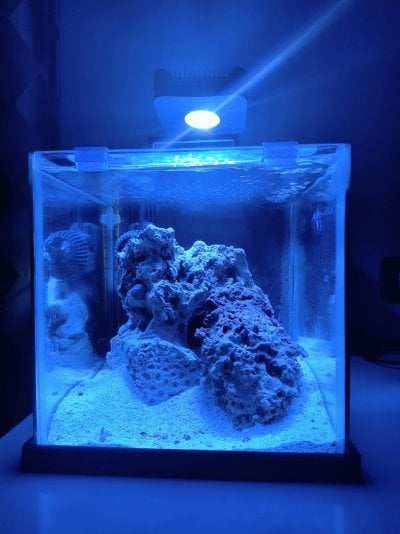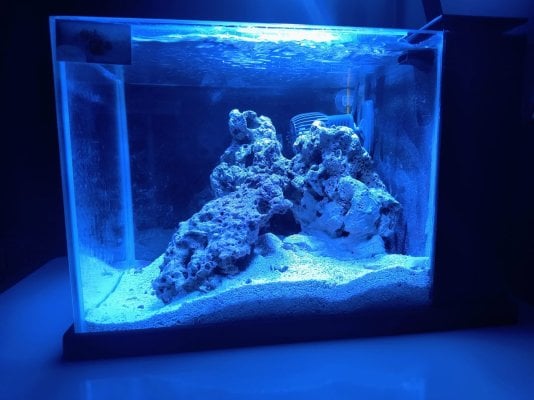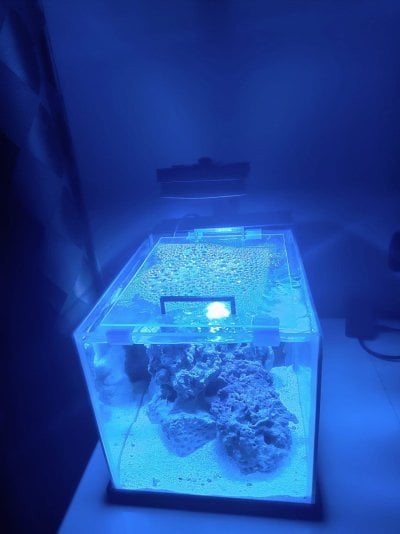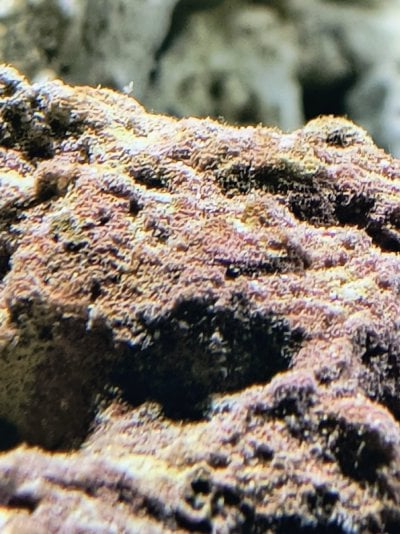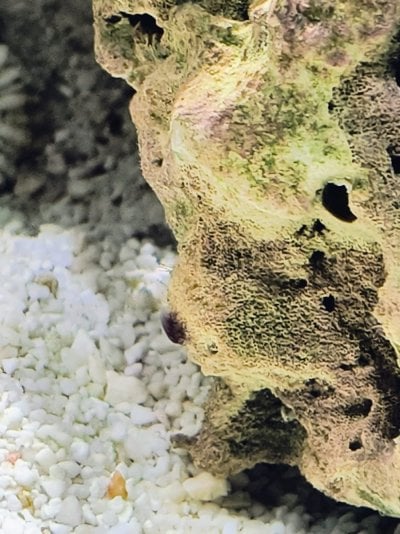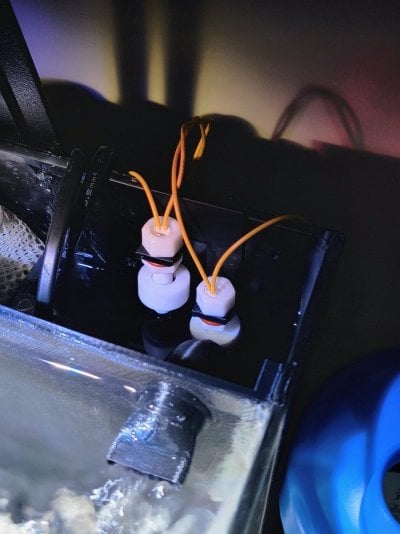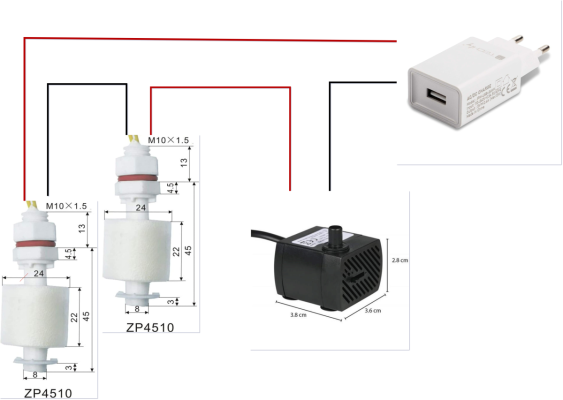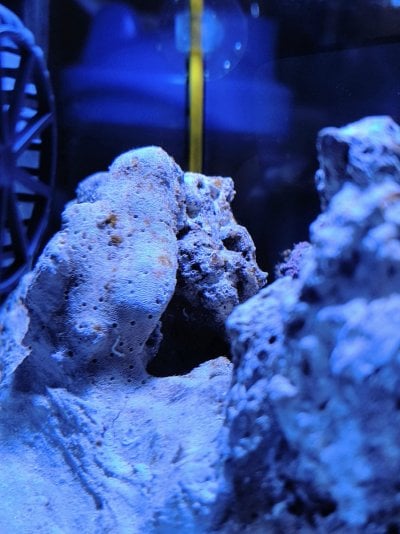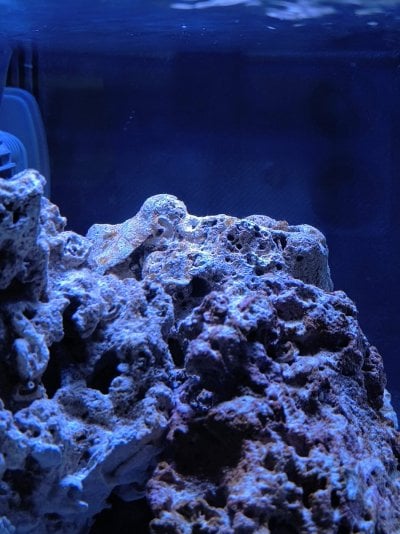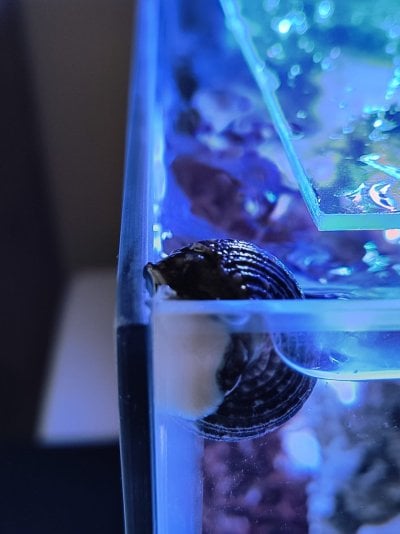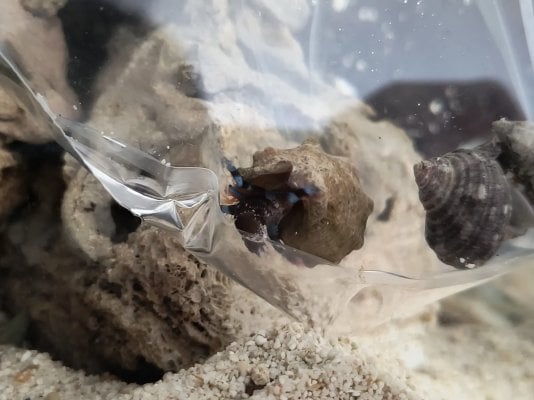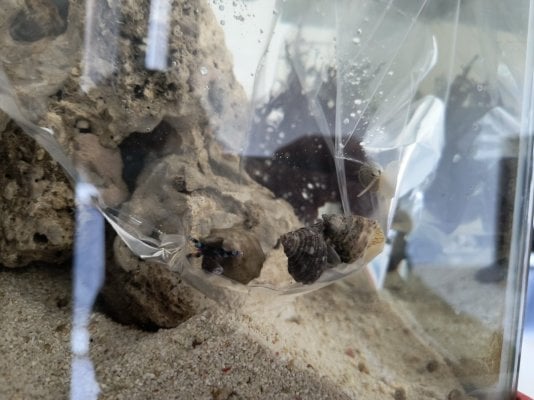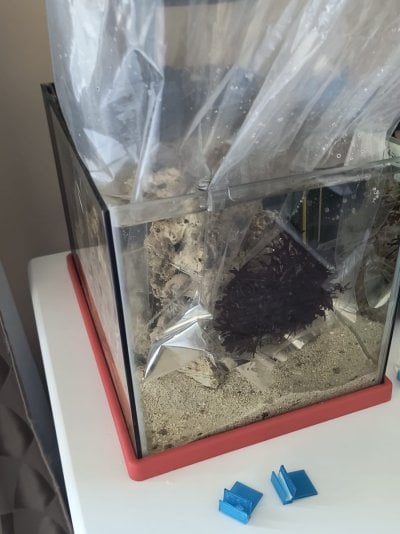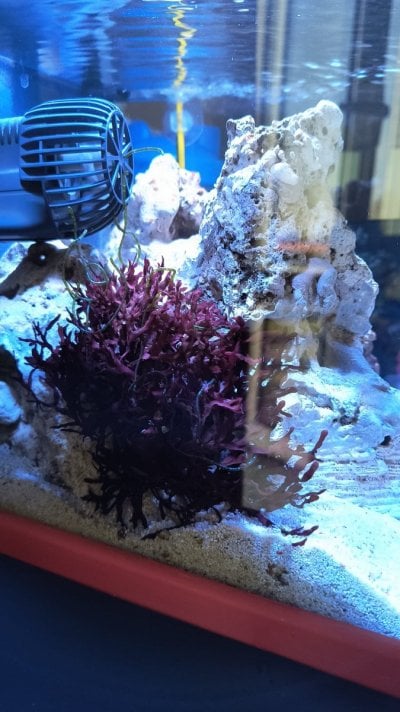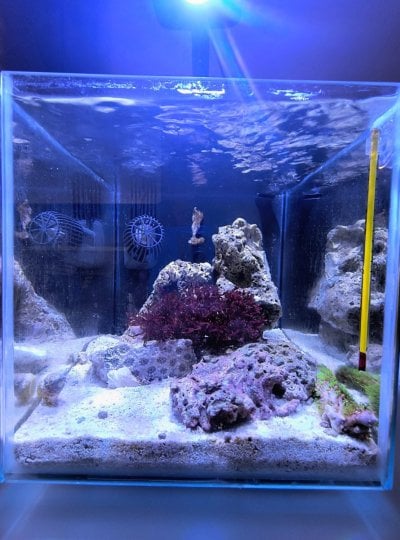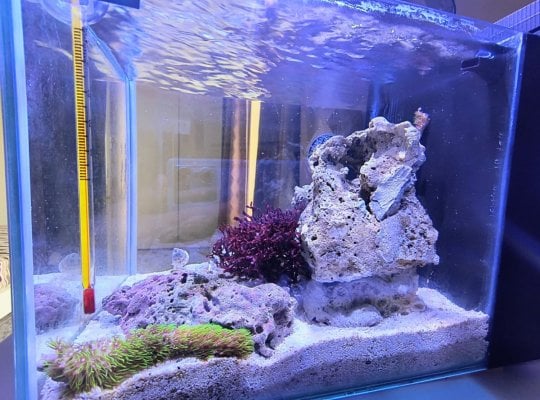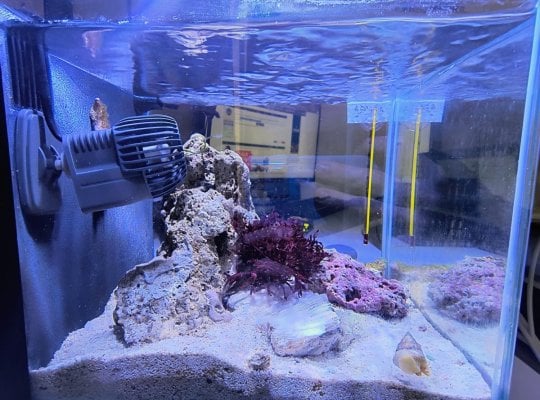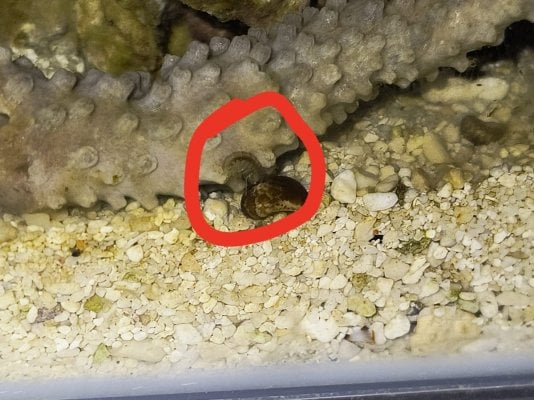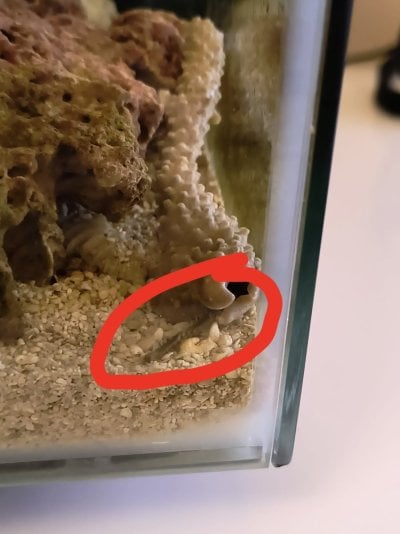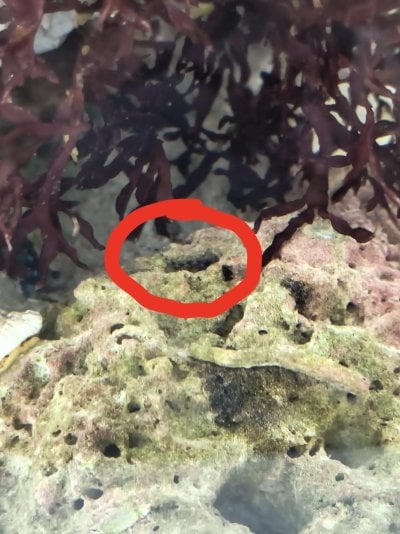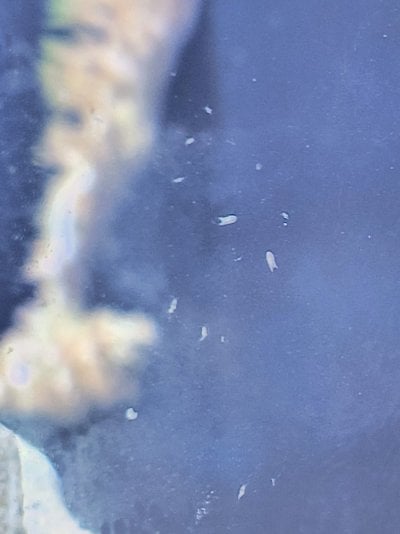Hi everyone!
It's a pleasure to be able to share my very first salty adventure here on R2R!
On March 23, the journey began when I took an old 15-liter tank from the depths of mycellar and placed it next to the desk where I work.
The target of this aquarium is to understand how sustainable a marine reef aquarium is in terms of effort and costs.
Therefore I decided to challenge myself with pico reef in which I plan to insert exclusively a CUC and soft corals (perhaps an Okinawa gobiodon).
With a 3D printer I created the wall in black PLA to create an all in one filter with three rooms in the back.
The chambers contain perlon, biological media (seachem matrix), 25W heater and 600l/h return pump.
All the technique mentioned so far was in house, the first purchase I made were the rocks and a small movement pump (sicce voyager 1000). The rocks were previously placed in an aquarium that was disused after a few months. The rocks were boiled and cleaned with running water by the previous seller, I carried out a second boiling to be safe.
Together I also received a hydrometer and a watch, all for 10 euros,
The second purchase was online from a fish shop: I purchased the Aquaforest salt, the AF Bio S bacteria and the biological media, an analogue Aquili PO4 test, a thermometer and a self-starting siphon with tap.
At home I already had 5 in 1 Aquili test (probably not the best for a marine aquarium).
Searching a bit on the used online markets I spotted a Luminie Pixie 30 including wifi module which I purchased for 40 euros shipped.
I had everything I needed to get started, all that was missing was osmosis water (to keep start-up costs low and given the limited quantity of water for the moment I prefer to purchase it from the LFS) and a live rock to introduce different bacterial fauna.
Initially I thought of a bare bottom Berlin setup but the LFS convinced me that it is possible to have such a small aquarium even with a layer of sand, as long as there is constant maintenance.
For 25 euros I took home a small live rock, live sand and 25 liters of osmosis water.
To reduce the amount of water that evaporates I decided to place an lid open on the sides.
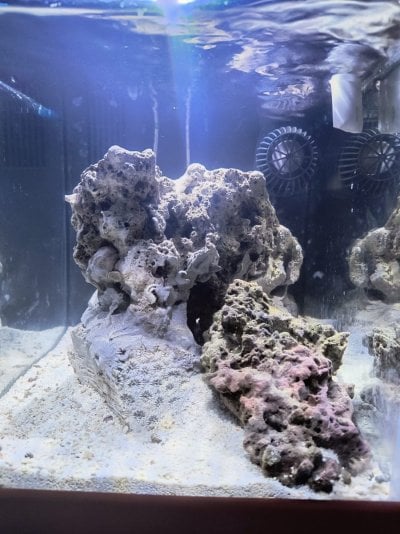
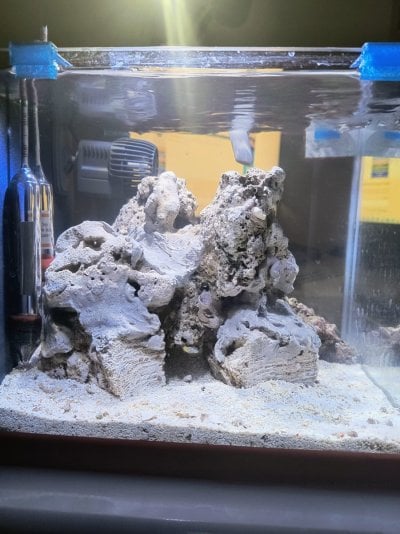
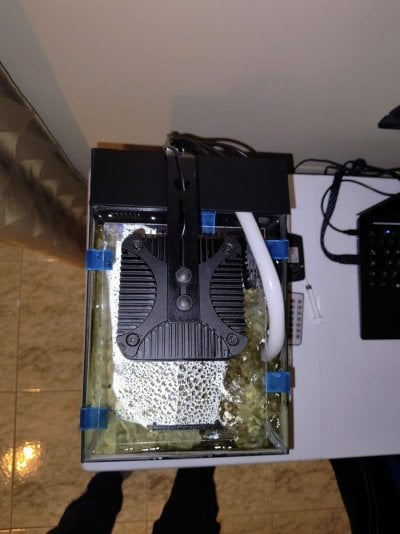
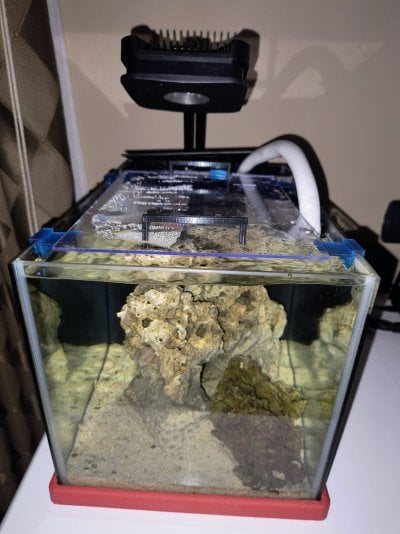
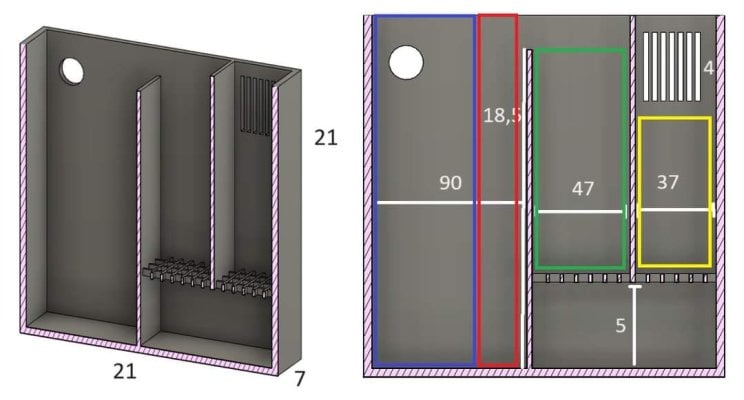
It's a pleasure to be able to share my very first salty adventure here on R2R!
On March 23, the journey began when I took an old 15-liter tank from the depths of mycellar and placed it next to the desk where I work.
The target of this aquarium is to understand how sustainable a marine reef aquarium is in terms of effort and costs.
Therefore I decided to challenge myself with pico reef in which I plan to insert exclusively a CUC and soft corals (perhaps an Okinawa gobiodon).
With a 3D printer I created the wall in black PLA to create an all in one filter with three rooms in the back.
The chambers contain perlon, biological media (seachem matrix), 25W heater and 600l/h return pump.
All the technique mentioned so far was in house, the first purchase I made were the rocks and a small movement pump (sicce voyager 1000). The rocks were previously placed in an aquarium that was disused after a few months. The rocks were boiled and cleaned with running water by the previous seller, I carried out a second boiling to be safe.
Together I also received a hydrometer and a watch, all for 10 euros,
The second purchase was online from a fish shop: I purchased the Aquaforest salt, the AF Bio S bacteria and the biological media, an analogue Aquili PO4 test, a thermometer and a self-starting siphon with tap.
At home I already had 5 in 1 Aquili test (probably not the best for a marine aquarium).
Searching a bit on the used online markets I spotted a Luminie Pixie 30 including wifi module which I purchased for 40 euros shipped.
I had everything I needed to get started, all that was missing was osmosis water (to keep start-up costs low and given the limited quantity of water for the moment I prefer to purchase it from the LFS) and a live rock to introduce different bacterial fauna.
Initially I thought of a bare bottom Berlin setup but the LFS convinced me that it is possible to have such a small aquarium even with a layer of sand, as long as there is constant maintenance.
For 25 euros I took home a small live rock, live sand and 25 liters of osmosis water.
To reduce the amount of water that evaporates I decided to place an lid open on the sides.








